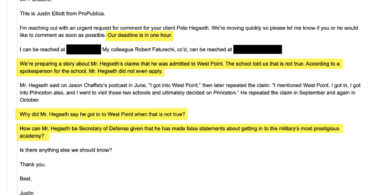By Martin Stanton, retired US Army officer
Small Wars Journal
In the past year we have been bombarded by stories about the military – particularly the Army, experiencing a recruiting crisis that has caused major shortfalls in manning the force.
There are various reasons given for this recruiting shortfall. From:
- pushback against the “woke” military by traditional military families to
- non-participation by normally liberal/progressive communities,
- the impact of the Afghan debacle and the mismanaged “Global War On Terror” (GWOT) conflicts of the first two decades of the 21st century to
- highly publicized veteran’s issues (suicide etc.),
- the involuntary separation of thousands of servicemembers who were reticent to take the COVID vaccine,
- changing demographics,
- competitive pay scales in the civilian workplace and cumbersome recruiting processes,
the causes given for the recruiting crisis are legion and likely all true to some extent.
The recruiting crisis we find ourselves in is a “Perfect Storm” resulting from the confluence of three major issues:
First – a loss of public confidence in the military’s leadership, next-sclerotic recruiting processes and finally – a limited variety in terms of service offered that does not appeal to the modern workforce.
To overcome recruiting shortfalls and rebuild the force we are going to have to overcome each of these. We have to dig our way out of this hole.
1) Rebuild Trust with the Public:
The military used to enjoy high approval ratings with the American public. It does not do so now. (Although it is rated higher than politicians and the media, the fact that the military currently enjoys only a 60% approval rating is a precipitous fall in public confidence).
The last few years have not been good for the military’s image. Some of this comes from bad feelings leftover from the chaotic finale in Afghanistan.
Defeat seldom inspires people. This is especially true when the whole multi-decades effort seems ill thought out in retrospect.
Add to that the disconnected nature of today’s military and political senior leaders and their very publicized tone-deaf decisions (the COVID shots discharges were especially disastrous) and it’s not hard to see that watching this cavalcade of failure has impacted the eagerness of the potential recruits.
In many ways the military’s senior leadership has lost the trust of the American people from whom the ranks of their forces are drawn.
This is the kind of trust that takes years (decades) to rebuild. but we must start somewhere. Here are some thoughts:
1a) Do a better job with strategic advice to civilian leadership: This is a long lead time project but the time to start it is now.
Our strategic performance since 9-11 has been abysmal. Much of this can be laid at the doorstep of senior civilian leadership in multiple administrations but who gives that civilian leadership military advice?
We kept the Iraq and Afghanistan campaigns going with vague/indefinable end-states and hope as a method to achieve them.
GEN G.C Marshall would have pushed back against such strategic malpractice but the senior leaders of the 21st century weren’t up to the task.
They ignored the fact that although our military is a volunteer military it is still a citizen military. Citizens (and their families) don’t appreciate their lives and personal sacrifices expended in ill thought out open-ended military adventures.
The current recruiting crisis is a shot-over-the-bow to our nation’s senior military leaders, the recruiting pool isn’t up for another 20-year road-to-nowhere that ends in defeat. Do better.
1b) Take better care of the servicemembers we have: Fairly or unfairly the military has recently acquired a reputation for not taking care of its people the way it used to.
We can find money to pay for Transgender surgery but cannot seem to get rid of black mold in the barracks.
There’s a lot of complaint on social media by servicemembers and ex-service members about bad conditions and uncaring chains of command.
A perfect example of this is a recent social media post by an E-4 about to ETS from the 82nd Airborne complaining that he is being made to pay for gear his chain of command directed him to leave behind during the Kabul evacuation.
We obviously only see one side of the story in this young soldier’s post, but having been involved in the Kabul evacuation I can see this occurring (especially if the chain of command isn’t aggressive about insuring proper loss accountability is done as soon as possible after the directed abandonment).
At any rate the complaint, unanswered by the Army, is another black eye that everyone on social media can see.
Things like this, the suicide epidemic and the COVID shot fiasco all contribute to a growing sense amongst the population of potential recruits (and their families and influencers) that something is not right within the military.
Word-of-mouth advertising from servicemembers who leave the military with a positive impression can be an incentive to potential recruits, conversely stories of bad living conditions and neglectful chains of command can be a powerful disincentive.
Given the prevalence of social media, we have a vested interest in insuring our servicemembers are well taken care of.
At the end of the day keeping barracks in proper repair and taking care of soldiers isn’t that hard. That we have acquired a reputation for not doing so is, again, a direct reflection on the military’s senior leadership. . . .
. . . . 2d) Re-Engage with the traditional high recruiting states: The South and the Mid-West are the traditional localities for recruiting, increase emphasis there. Re-engage with community and veteran leaders about recommending service.
Be frank about what the military is doing to improve servicemember care and other hot-button issues that suppress recruiting. Stress military service as a stepping-stone to a more productive life (Skills, discipline GI Bill etc.). Specifically in places like rural areas hard hit by the Fentanyl epidemic, emphasize with community leaders that military service is a way to save / salvage young people and give them direction in life.
2e) Stop placing emphasis on low recruit producing populations; The military must welcome qualified recruits from all segments of society.
However, we must be smart about how many recruiting dollars we spend to specifically go after segments of society that do not typically enlist.
The famous cartoon ad featuring a sergeant whose parents were in a same-sex marriage was (at best) a well-intentioned effort to expand outside the traditional recruiting base.
How many recruits did it produce? . . . . (read all on Small Wars Journal)








Leave a Comment